Too cute! How to style your kids on a budget.
Published on September 29, 2025
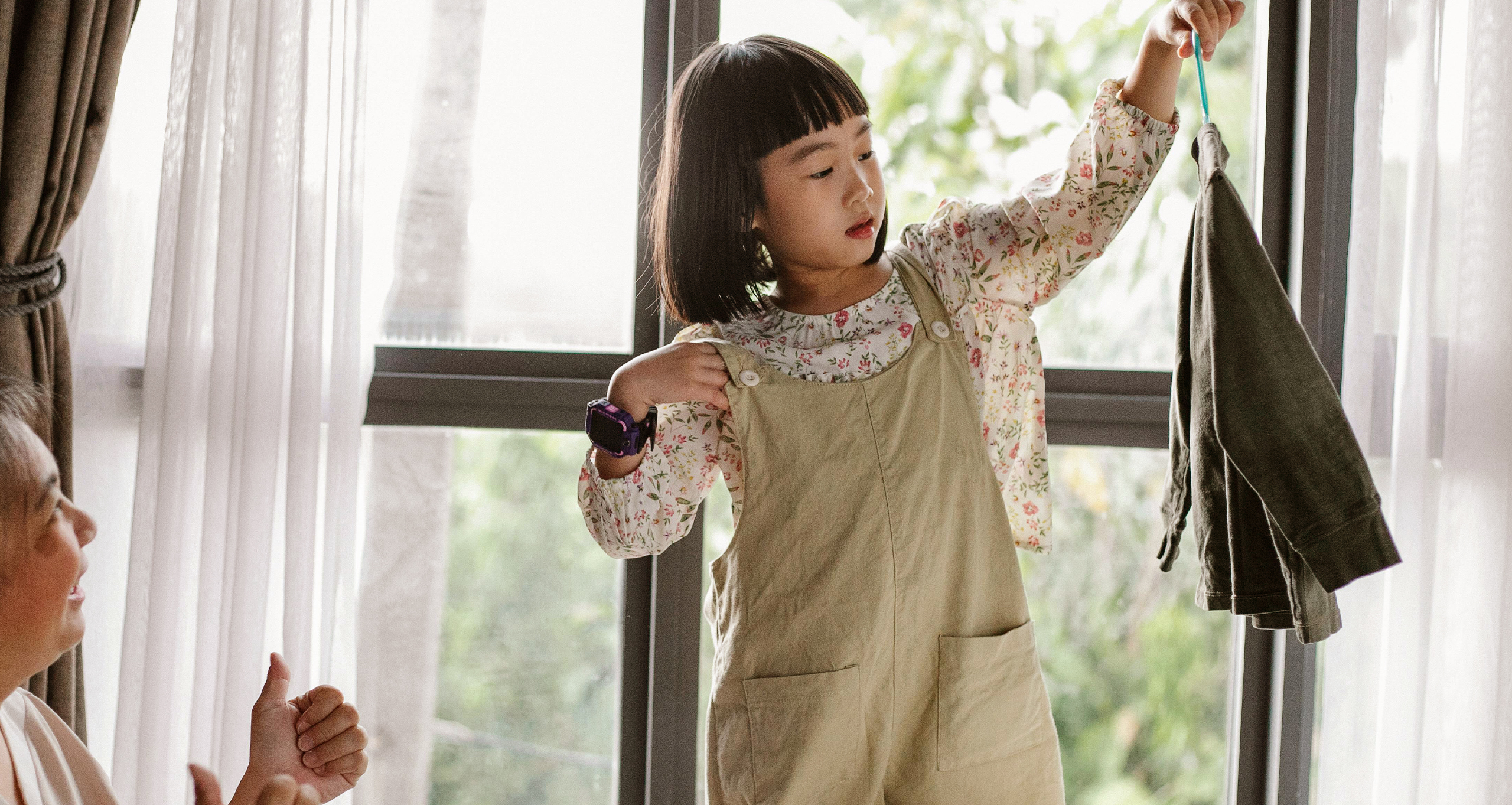
It may seem impossible to style kids on a budget. Tiny clothes often come with surprisingly big price tags. Between growth spurts, outdoor adventures, and the occasional spilled juice box, it can feel like you’re constantly buying more and needing to reach for whatever’s cheapest or happens to be on sale, not what you’d really like. It’s easy to think dressing your children both affordably and with style is out of reach.
But here’s the good news: looking polished doesn’t have to drain your budget – or your energy.
With a little intention, you can create wardrobes for your kids that are stylish, practical, and budget-friendly. Think less chaos in the closet, more confidence for your little ones, and outfits that feel effortlessly put together. Best of all? It can be done without losing the fun of childhood dressing.
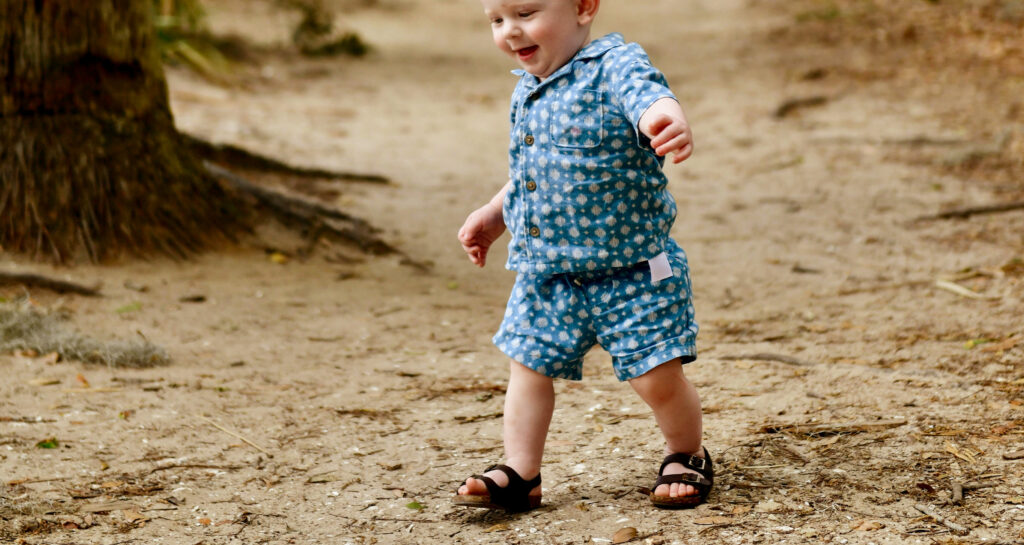
Why presentation matters
Dressing well isn’t about drawing attention or keeping up with trends. It’s about confidence and respect. Children who feel neat and cared for often carry themselves differently—walking into school, church, or a family gathering with a quiet confidence that says, “I belong here.”
Dressing kids well doesn’t mean stripping away their childhood charm, or dressing them so “perfect” that they can’t climb a tree or chase butterflies. The goal is to teach them the joy of presenting themselves with intention, all while keeping room for playfulness, color, and functionality.
Simply put, it can be delightful rather than stuffy to see children looking polished and a little more grown-up – handsome in a button-down or sweet in a classic dress – while still being perfectly age-appropriate.
Ready to style your cuties on a budget? Here are some practical tips.
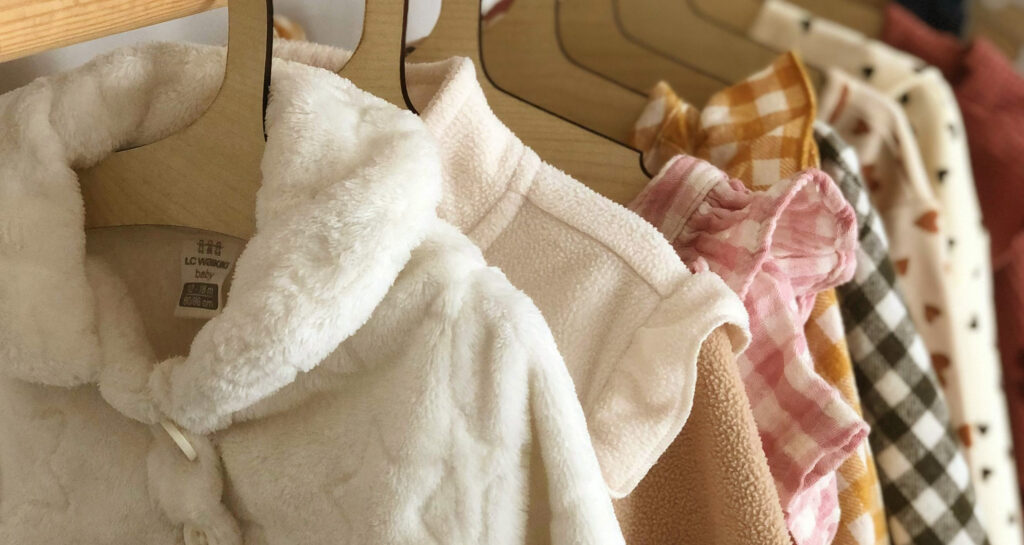
The capsule wardrobe secret
One of the best-kept style secrets—whether for adults or children—is the capsule wardrobe. Instead of a closet bursting with random, mismatched pieces, a capsule wardrobe keeps things simple: just a handful of versatile, quality basics that can be mixed and matched in endless ways.
For kids, this might look like:
- Tops: solid-colored tees, a couple polos or blouses, and one fun patterned shirt.
- Bottoms: jeans, leggings, or a neutral skirt.
- Layers: a cardigan or neutral sweater, plus a hoodie for play.
- Coats: one play coat (puffer or parka) and one “elevated” coat, like a peacoat or tailored wool blend jacket—often found affordably off-season.
- Shoes: one everyday pair (sneakers or sandals) and one dressier pair (Mary Janes, loafers, or boots).
And here’s the best part: a capsule wardrobe doesn’t have to mean “all neutrals” or boring basics. In fact, capsules are a perfect way to let colors and patterns shine. The trick is to keep the foundation pieces neutral—bottoms, cardigans, and coats in cream, brown, soft pink or blue, or navy—so that the brighter, more playful pieces really pop.
That hot pink sweater, sparkly dress, or dinosaur-print shirt suddenly looks intentional instead of random, because it layers beautifully with the basics. Tops, dresses, and statement sweaters are the perfect place to bring in color, pattern, and personality while still keeping the overall wardrobe polished and cohesive.
The result? A smaller wardrobe that feels bigger because everything works together. Less decision fatigue, fewer laundry battles, and more mornings that just flow.
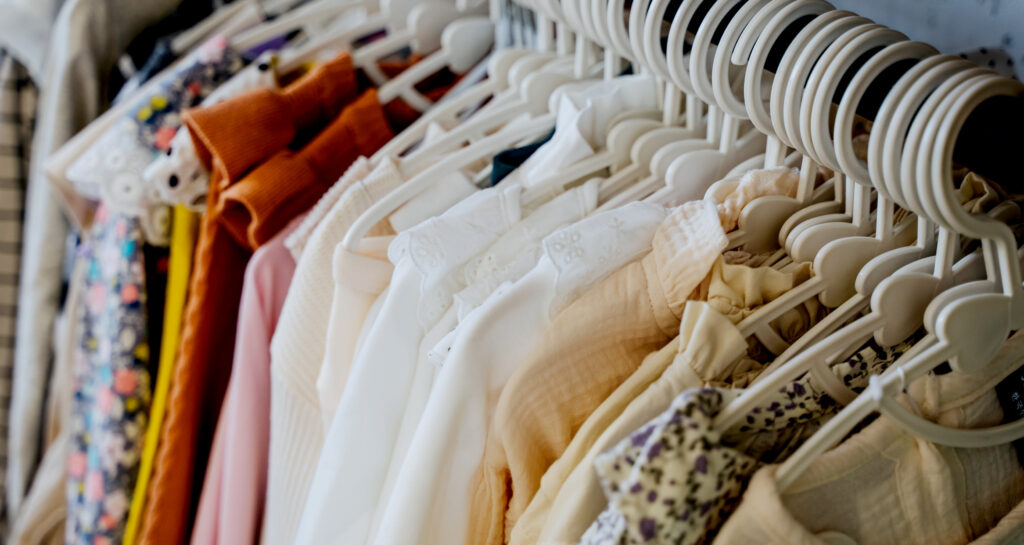
The power of color palettes
A color palette is the foundation of any functional wardrobe. It doesn’t mean limiting what your child can wear—it simply provides a guide when shopping and helps you build a closet that works together instead of against itself.
Think of it this way: the palette helps you decide whether that clearance find is a smart addition or just extra clutter. It gives you a framework to ask: Does this piece blend with what we already own? Does it suit an upcoming occasion? Does it help my child shine—or just add chaos to the closet?
When creating a palette, start with neutral foundation colors—navy, cream, tan, or gray—for bottoms, jackets, and layering pieces. Then add accent colors that reflect your child’s unique personality and appearance: a blush sweater to highlight rosy cheeks, a forest green shirt to bring out green eyes, or golden yellows to complement warm-toned hair.
With a set palette, outfits look polished without effort. Even better? You can extend the palette across siblings (and even yourself) to simplify church outfits, special occasions, or family gatherings.
For example:
- Autumn tones: rust, mustard, cream, and forest green.
- Coastal calm: shades of blue, white, and khaki.
- Spring garden: blush, lilac, ivory, and sage.

Smart shopping with intention
Dressing well on a budget isn’t about chasing trends – but shopping wisely. A few strategies make all the difference:
- Shop off-season: Buy next year’s peacoat in April or snag Christmas dresses in July clearance sales.
- Clearance racks and secondhand shops: Great places to find quality basics or even those “special” pieces at a fraction of the cost.
- Choose matching sets: From cozy jogger-and-sweater combos to blouse-and-breezy-pants outfits, coordinated sets add instant polish and usually cost less than buying separates.
- Focus on accessories: A bow that matches her coat, a belt that dresses up his chinos, or classic shoes that pair with everything can elevate even the simplest basics.
- Stick to solids for socks and tights: White, navy, or gray makes laundry easier and avoids mismatched chaos.
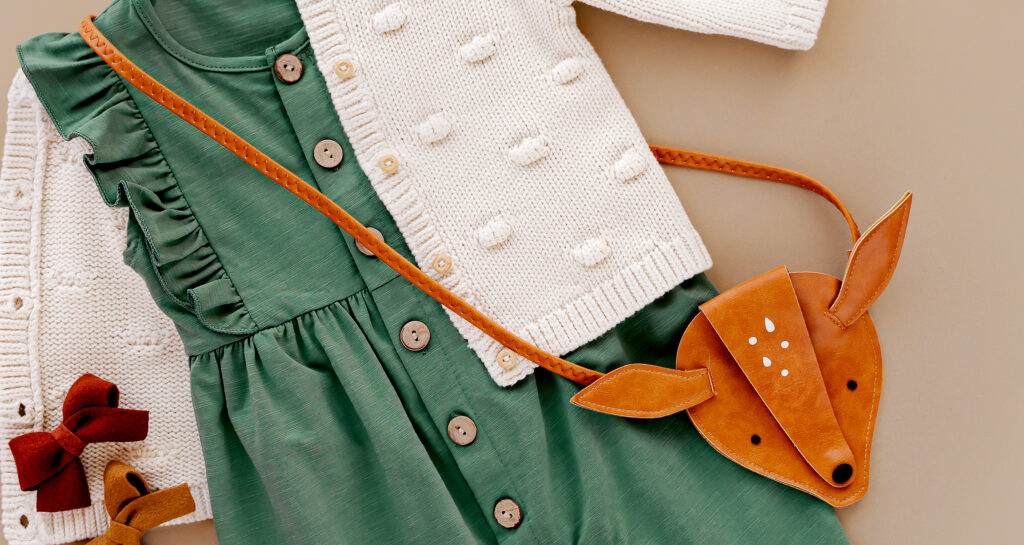
Fun meets function
No matter how you dress them, children are still children. A polished wardrobe doesn’t mean saying no to whimsy. Keep space for the sequined tutu, the puppy sweater, or the character-themed sneakers. Just balance them with basics so those fun statement pieces shine without clashing.
Think of it like seasoning: a little sparkle or roar goes a long way when paired with versatile neutrals.
Likewise, stylish doesn’t mean clothes that are uncomfortable or fussy—the kind that make you nervous every time your child heads outside to play. Nice basics like chino pants, relaxed denim jeans, or cotton dresses can hold up beautifully through active play and frequent washes, giving you both practicality and polish.
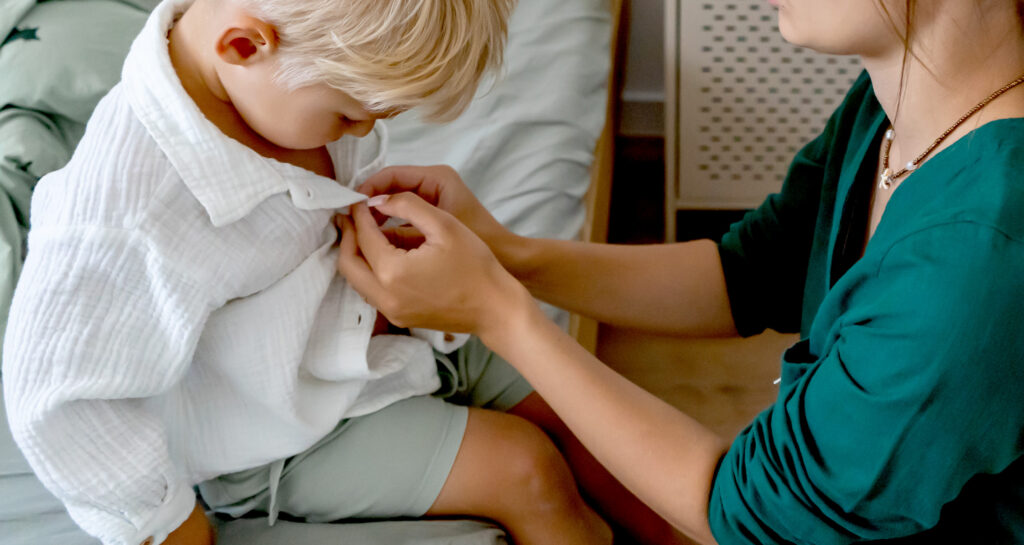
Plan ahead for special days
Mornings are easier (and calmer) when outfits are chosen the night before—especially for church, holidays, or special events.
Outfits don’t have to be perfectly matching to look cohesive. Aim for coordination instead:
- Everyone in shades of blue.
- One common texture or pattern (stripes, florals, or plaid).
- Neutral anchors (cream cardigans, brown belts, or navy shoes) across the family.
These little touches bring an elevated, thoughtful look without effort—or stress.

Final touches: Intentionality over excess
When tempted by the “so cute!” find or killer clearance deal, pause and ask: Does it match my child’s personality? Does it fit the wardrobe’s palette? Is there an upcoming occasion for it? Sometimes the best style decision is to walk away, keeping closets uncluttered and purposeful.
And here’s one more secret to avoiding chaos: routinely sort through your kids’ clothes. Store what can be handed down, donate gently used items, and toss the damaged, torn, or stained pieces that linger at the back of the drawer. Regularly editing their wardrobe keeps closets simple and stylish, rather than overwhelming and cluttered.
In the end, dressing kids well on a budget is less about money and more about mindset. With a capsule wardrobe, smart color choices, and a little planning, your kids can look polished, joyful, and perfectly like themselves – without the chaos or the cost.
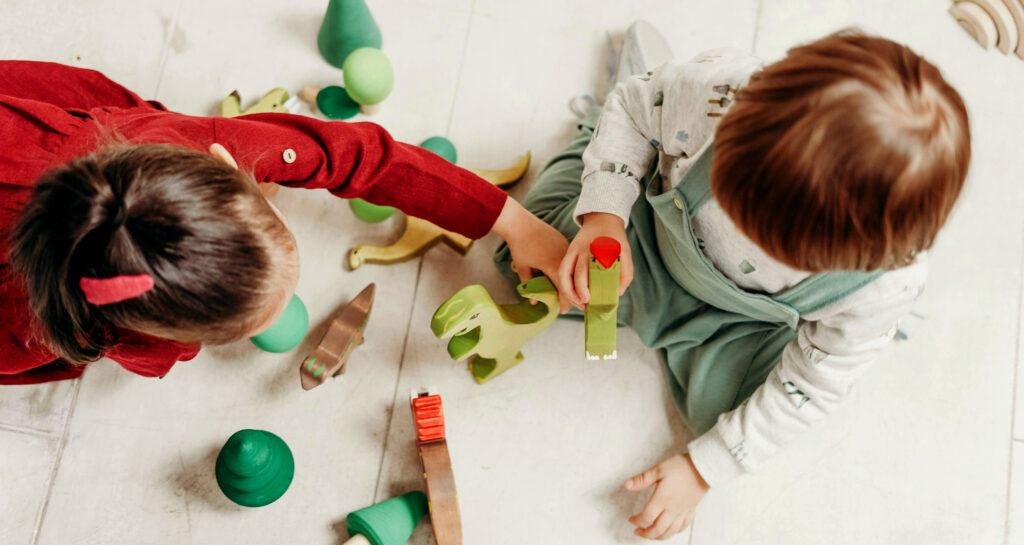
The takeaway
In the end, dressing kids well on a budget is less about money or glamour and more about mindset. With a capsule wardrobe, smart color choices, and a little planning, your kids can look polished, joyful, and perfectly like themselves—without the chaos or hefty cost.
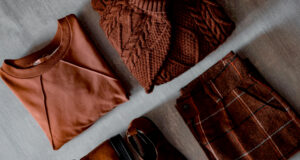



This sums up all the concepts we’ve found so helpful shopping for five kids, ages 3 months to 9 years. Just got the fall and winter shopping done yesterday. Thanks to color palettes for the little guys, they (or anyone) can dress themselves and it will all coordinate. The whimsy was there too, the 2 year old got a red cable knit sweater with a fire engine on it! 🙂